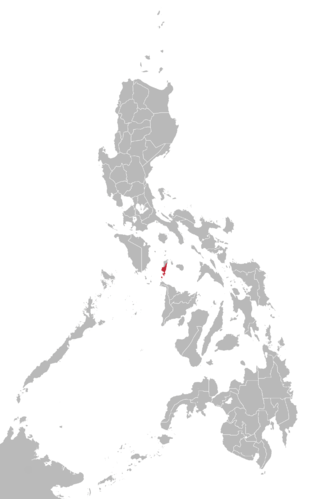| Onhan | |
|---|---|
| Loocnon, Inonhan | |
| Native to | Philippines |
| Region | Romblon |
Native speakers | 86,000 (2000)[1] |
Austronesian
| |
| Language codes | |
| ISO 639-3 | loc |
| Glottolog | inon1237 |
 Inonhan language map based on Ethnologue | |
Onhan is a regional Western Bisayan language spoken, along with the Romblomanon and Asi languages, in the province of Romblon, Philippines.[2] The language is also known as Inunhan and Loocnon.
- The Onhan language has three variants – those spoken in the municipalities of Santa Maria and Alcantara use /l/ instead of /r/. Example: kararaw is kalalaw, and other speakers change /r/ or /l/ to /d/ as in run or lun to dun.
Specifically, Onhan is spoken on the following islands within Romblon:
- Tablas: the municipalities of San Andres, Santa Maria, Alcantara, Ferrol, Looc, and Santa Fe and some upland sitios in Odiongan,.
- Carabao: the sole municipality of San Jose.
As a variant of the Kinaray-a language, some speakers are found on the island of Boracay in Aklan province as well as parts of the island of Panay, specifically in the following municipalities: Malay, Nabas and Buruanga. In the provinces of Oriental and Occidental Mindoro, migrant Onhan speakers from Tablas Island brought the language to the following municipalities: San Jose, Magsaysay, Bulalacao, Mansalay, Roxas, and some parts of Bongabong. As such, it is very much related to Kinaray-a and Kuyonon.
Grammar
Pronouns
| Absolutive1 (emphatic) |
Absolutive2 (non-emphatic) |
Ergative | Oblique | |
|---|---|---|---|---|
| 1st person singular | ako | takon | nakon, ko | akon |
| 2nd person singular | ikaw, kaw | timo | nimo, mo | imo |
| 3rd person singular | imaw | – | nana | ana |
| 1st person plural inclusive | kita | taton | naton, ta | aton |
| 1st person plural exclusive | kami | tamon | namon | amon |
| 2nd person plural | kamo | tinyo | ninyo | inyo |
| 3rd person plural | sanda | – | nanda | anda |
Numbers
| Number | Onhan |
|---|---|
| 1 | Isyá |
| 2 | Darwá |
| 3 | Tatló |
| 4 | Ap-at |
| 5 | Limá |
| 6 | An-um |
| 7 | Pitó |
| 8 | Waló |
| 9 | Siyám |
| 10 | Púlô |
| 100 | Isya-kagatús |
| 1000 | Isya-kalibó |
| First | Una |
| Second | Pangalwa |
| Third | Pangatlo |
| Fourth | Pang-ap-at |
| Fifth | Pang-limá |
| Sixth | Pang-an-um |
| Seventh | Pang-pitó |
| Eighth | Pang-waló |
| Ninth | Pang-siyám |
| Tenth | Pang-púlô |
Literature
The New Testament was translated into Bisaya-Inunhan by Eldon Leano Talamisan and published in 1999.
The Harrow (Ang Singkaw), an official publication of Romblon State University, publishes Inunhan poems, stories and other genres of literature.
References
- ^ Onhan at Ethnologue (18th ed., 2015) (subscription required)
- ^ Quadra-Balibay, Angie (2020-02-06). "UP scientists, linguists develop online dictionary to save endangered Filipino languages". GoodNewsPilipinas.com. Retrieved 2024-02-01.
